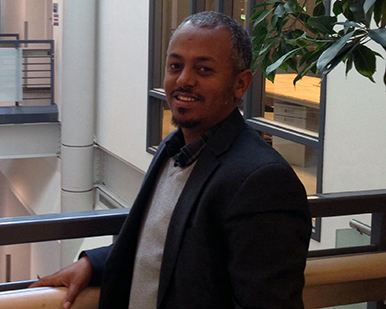
Some time in the future when you go shopping for a toothbrush or a television – or anything in between – and you look at the label to see the price, you’ll be able to see the product’s environmental cost as well. Getachew Assefa says this sort of information is appearing overseas and it will eventually be the case in North America too.
Assefa is an associate professor in the Faculty of Environmental Design and Althena Chair in Life Cycle Assessment in Design,
“Right now there is a development in Europe for environmental product declaration that’s the equivalent of the nutrition facts on a food packet,” he says. “It’s based on life cycle analysis and gives us the possibility to look at products the way we look at nutrition facts now.”
So in addition to checking to see how much sugar or salt you are eating, you would be able to find out how much carbon emissions you’d be causing by buying that product too.
Life cycle analysis – sometimes called cradle-to-cradle analysis – is a fairly new and growing field, and offers a new way to study the world. “Usually the tradition in science is reductionist,” he says. “You focus on only one system at a time but the life cycle perspective is looking at raw material extraction to production of the product, to the use of the product to the disposal of that product.”
Assefa, who has a PhD in industrial ecology, started thinking about life cycles while “playing with molecules” as an undergrad studying chemical engineering. “At the end of the day the molecules have an impact on the environment as well as the economy,” he says. “So from the environmental perspective, where should we be putting our molecules?”
He and his students are involved in various research projects including looking at the environmental and economic sustainability of using biomass in Alberta and biosolid (sludge from wastewater) in Kelowna as sources of fuel and nutrients.
“The Kelowna project is looking at the life cycle implications of new technologies that are not commercialized yet,” he says. “We’re looking at assessment of the knowledge around the new technologies to give a holistic perspective.” By looking at the life cycle implications of the biosolids, Assefa’s research can identify how to use them more effectively.
“We usually suboptimize or shift problems if we focus only on one system but if you look at the whole system then we can know where the weak link or the hotspot is and so on.”
Spotlight on Sustainability is an ongoing series profiling the work of students, faculty and staff. To submit story ideas please contact the Office of Sustainability.
Article by Jennifer Allford in UToday.
Image courtesy UToday

